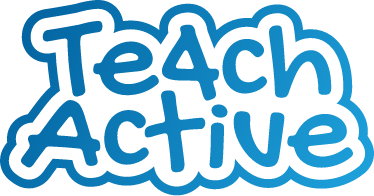Objective:
Using Active Learning to Build Collective Identity
Why Teach Active?
At Heamoor School, much like other settings, we were concerned about the impact that the enforced separation during the COVID pandemic was having on the emotional resilience and the ability of our learners to connect with one another whenever there was potential ‘rupture’. We felt that the current Year 5 had particularly suffered with the lack of contact and the erosion of relationships during the ‘lock-down periods’. The Year 5 teacher was confident when using active maths to engage the learners and to develop a positive relationship with maths. He also felt that the competitive element that it enabled would be perfect to help develop the collective identity of the class and give them the opportunity to understand what it means to work together towards a common goal.
What did it look like?
Every Friday morning, on completion of celebration assembly, the class would remain in the hall. The activities would focus on consolidating the learning that took place during that week or be used as a pre-teach for the upcoming block of learning. A variety of activities were employed, such as ‘Addition Heroes and Pirates’ Gold’ .
As we all know the strengths of the Teach Active Maths scheme is the ease of resourcing, the engagement for all learners and the ability to ‘explore’ maths without the constraints of formal recording. However, the teacher did use
photos to show a progression of learning. A by-product of this was the reconnection to the lesson when the children looked back through their maths books.
Did it work?
The emotional resilience of the class was the area that needed to be developed if the children were to have any success this year.
Over the coming weeks there was a significant improvement in their ability to take responsibility for their actions, give warm feedback to their peers and genuinely think about the feelings of others. It is important to state that Teach Active Maths is not a ‘cure all’ for cohorts that have similar issues, but it did give the teacher the tools to show them what teamwork looks like and set them on the path on emotional growth.
The children have really enjoyed taking part in the Teach Active lessons. The lessons have been really engaging for the children and we have been delighted with how it has contributed to the children’s increased levels of resilience, helped to build more positive relationships between the children and to develop a more cohesive cohort.
What happened next?
At Heamoor School collaboration is valued and the conversations firmly put the child at the centre of all
decisions. The example of Teach Active Maths gave other professionals the opportunity to think about how well this style of learning allowed the class to flourish; allowed relationships to develop and allowed the children to succeed and fail in a safe setting.
The children have really enjoyed taking part in the Teach Active lessons. The lessons have been really engaging for the children and we have been delighted with how it has contributed to the children’s increased levels of resilience, helped to build more positive relationships between the children and to develop a more cohesive cohort.
Jodie Flynn, Headteacher
Heamoor Community Primary School
We are huge advocates of challenging our children to learn through active engagement within a wide and varied curriculum. Teach Active Maths has always been a key component in the consolidation of maths understanding and giving the children opportunities for fun learning.
Scott Markham, Teach Active Lead
Heamoor Community Primary School
